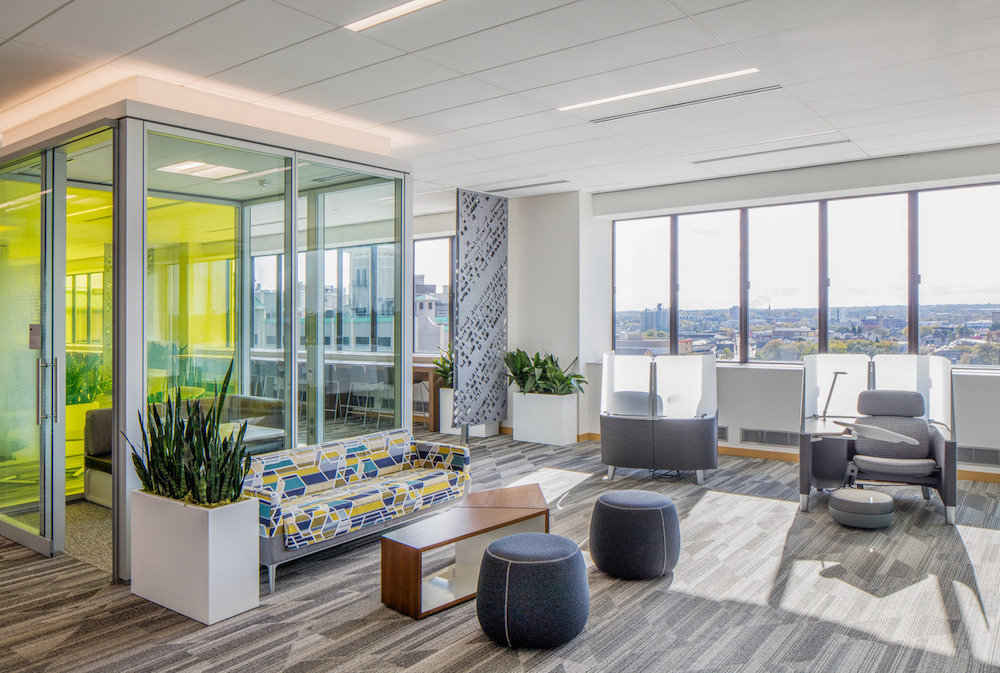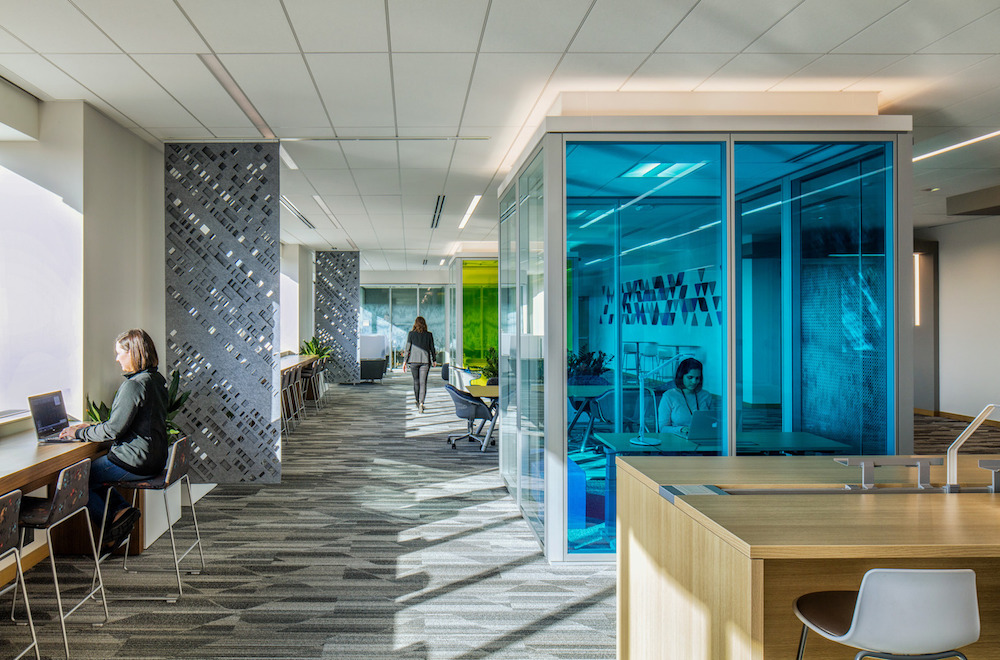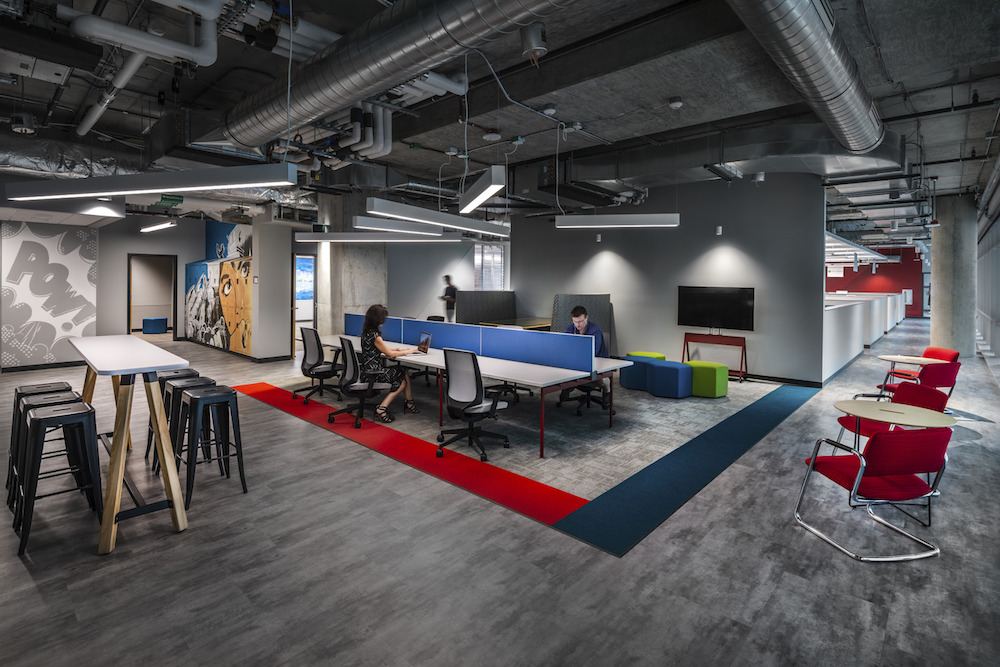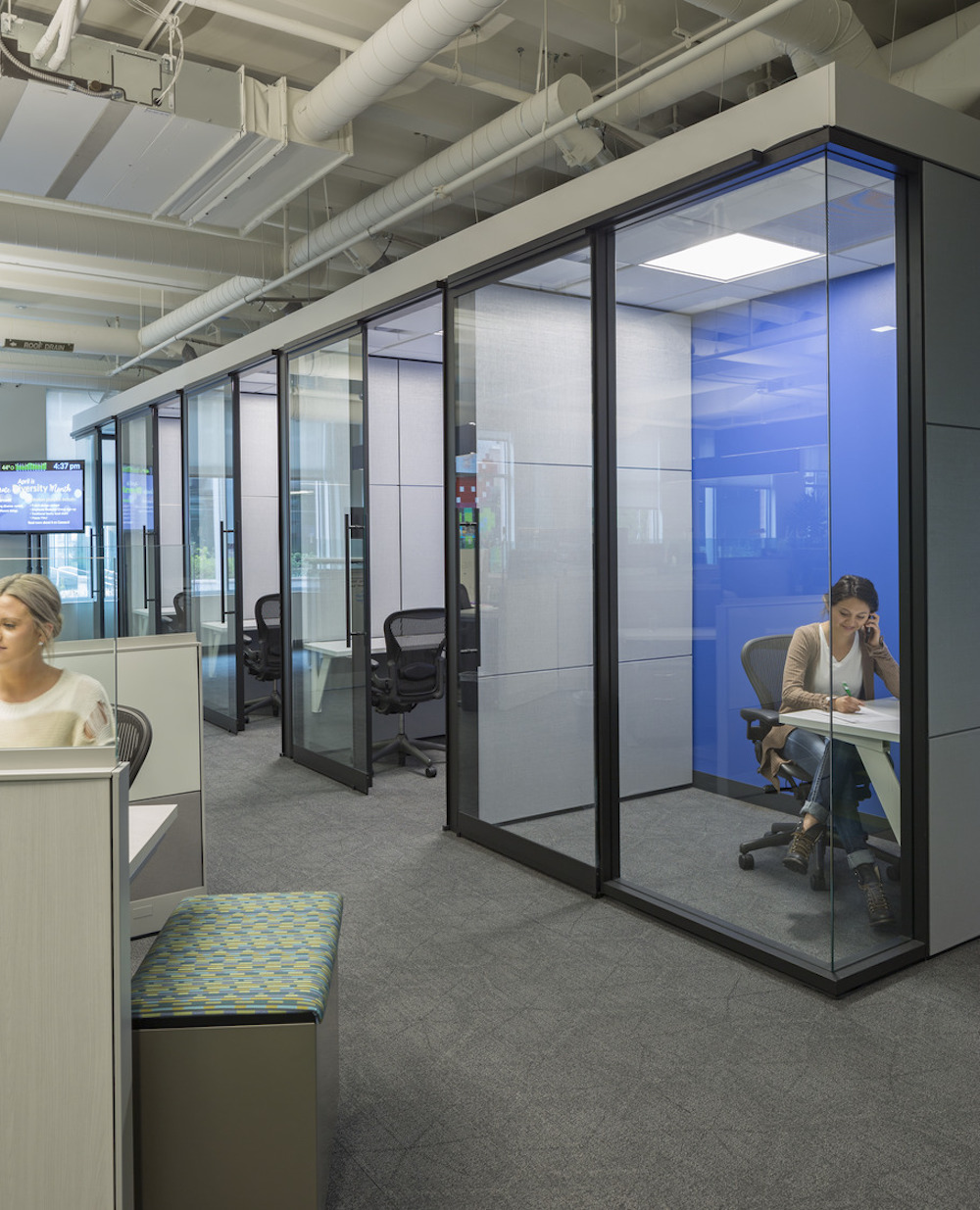The potential for a hybrid workforce poses a challenging real estate equation. Enter the Free Address workplace.

You worked in a Free Address environment; you never thought you could, but you did it! Before you start to disagree, look at where you spent time this past year working. Millions of people moved out of their 9 to 5 assigned desks and each day chose the space (albeit for many in their homes) that they would work. Sure, there were constraints and challenges, but over time you adjusted, and eventually found a rhythm. During this time, you chose much of what your work environment looked like, and I’m sure you enjoyed the perks of extra control and flexibility.
But before you get too comfortable, just know that things are going to change again. The workplace is not dead and as vaccines rollout and the pandemic wanes, employers still want a workplace that supports their desired culture and want to understand how the future workplace will respond. No one can truly tell you exactly what the future holds, however, there are some overall trends that are sure to continue.
One of the undisputed trends is the increased value placed on work flexibility—an employee’s ability to choose when, how and where work is done. This was already a growing design trend that was even further fast-tracked during the pandemic, and now that employees have a taste of work fluidity from their work from home (WFH) period; they have come to expect it even more, and removing it as an option could be a challenge.

The Potential Solution: Free Address
The potential for a hybrid workforce poses a challenging real estate equation. How do you best use space that may sit vacant for days within the week? Enter Free Address. This office configuration has already been around for a while, allowing companies to be nimble with real estate, while providing employees with choice during their workday. A highly visible benefit is the ability to quickly and easily shift seating to support large project teams, but the benefits, especially during a pandemic, go beyond that. I personally struggle with monotonous routines and during the past year have desired change, as I believe that variety stimulates us, keeping us creative and engaged. A Free Address and/or hybrid work environment that allows options of where to work from is a perfect solution to keeping employees engaged while still providing mobility and maintaining your company culture.
Companies from a variety of perspectives and means – from small to large renovations or new construction buildings – are choosing a Free Address work setting. Regardless of what level of expenditure your company is willing to make to support a more mobile workforce, there are many ways to approach it. Below is a 3-step framework that may help you get there:
Step 1: Understanding if Free Address Is Right for Your Organization
It’s important to understand how and why a Free Address environment could be beneficial. A Free Address environment can be calibrated to fit a company’s goals or culture. The most common reasons for Free Address are to reduce real estate costs, provide choice in the work setting and adaptability to change quickly. Clients choose to integrate Free Address at a variety of scales, from full-office Free Address solutions to smaller department or project team specific solutions and can be crafted to best support a company’s work model.
As many companies consider a hybrid work environment where employees can WFH part-time, Free Address can soften the transition from home to office. Coming out of a full WFH Scenario, a Free Address workplace can offer returning employees some of the perks they had at home: flexibility, choice and freedom in selecting where they work for the day.
Before making the decision to change to a Free Address work environment and determining the specific balance of collaborative vs. focus areas, it’s important to understand the cultural implications, employee preferences and current deficits. Once a decision is made to pursue Free Address, integrating a Change Management strategy with transparent communications that addresses employee concerns and builds excitement for the change is critical.

Step 2: Implementation
To modify an existing work environment to function as a successful Free Address space, some subtle but powerful changes are needed. Below are some guiding discussion questions and considerations to influence space programming and design.
Technology: How will laptops be connected at each work seat? Will phones travel with employees or will their phone number follow them to their work seat each day? Will keyboards, mice, and headsets stay with the work seats or travel with an employee? Will you need a reservation system, what spaces will be reservable, how will employees be able to find each other to have face-to-face interactions when in the office? What software and hardware upgrades will you need? With the rise of hybrid work, there will likely be a need for smaller spaces equipped with screens and cameras to support one-on-one virtual meetings.
Storage: An important element of Free Address is offering employees a ‘me’ space for items at the office. Employees will need somewhere to place personal items and project teams might require storage. Common solutions of the past such as lockers, file drawers or storage totes may not meet the needs of the future. As we further investigate Free Address to support a hybrid workforce, I anticipate new innovative storage solutions will be brought to market.
Policy: What is reservable? Is any seat open or are certain seats only for certain seniority levels? Will there be “neighborhoods” that certain departments should sit in? How long can you take the same seat or is there a rotation policy? Is there a clean desk policy at the end of the day or can you stay in a space for the week? Will employees be in-office all week, or a hybrid of remote and in-person, the impact on real estate will be directly proportional to an employee’s frequency within the office setting.
The mobility of a truly Free Address system may not be the best solution for all areas of the organization, like when comparing the versatility of a salesperson’s routine to the static accounting team member that needs a confidential space with access to check processing tools. Implementing Free Address in a smaller pilot group of volunteers or within a department can be a useful way to work out any kinks and provide valuable insight on how this workstyle can best be used in each department. Having leadership and senior-level influencers in that pilot group also goes a long way to advance change management and acceptance.
Programming + Design: The determined Free Address policies will heavily influence the programming and design of the space; for example, can employees stay in the same spot for extended periods of time for project-based work? Finally, if a hybrid workforce is implemented with WFH options, then the office will likely shift from the ‘me’ space for focus work to more ‘we’ space for collaborative activities. Before this can be determined, understanding ratios is an important part of the planning.

Step 3: Getting to a Seat Count
Multiple layers of information go into determining how many seats are needed in a Free Address workplace. We start by going through the goals for implementing Free Address, determine which departments will participate, and understand expected utilization percentages to set clients up for success with a nimble environment that can react to change.
Determining the correct seat count is a multi-layer math problem based on goals, culture, work seat types, departments, and growth. The simple math is to look at the assigned seat count, add Free Address seats and build in a buffer. First, employees will need to be categorized by work profiles, some standard options being on-site optimal, on-site virtual hybrid, virtual part-time and virtual permanent to determine utilization percentage. Then, apply the 50 percent rule—for every seat that is occupied for at least 50 percent of the time, assume the seat is needed all day. For seats that are used less than 50 percent of the time, reduce the seat count per the expected utilization percentage. Finally, add a buffer anywhere from five to 20 percent depending on the business goals and culture. If the WFH policy is more robust, this buffer can be smaller.
There is no one size fits all solution to implementing Free Address.
Clients also need to decide what constitutes as a seat; does a lounge or café seat qualify? Furniture is a critical component of the Free Address design and integrating the furniture vendor at the forefront of design can heavily influence the final space programming and function. Furniture can promote flexibility and choice, as well as foster collaboration through a variety of functional furniture solutions. A few choices include benching or touchdown areas, workstations that promote a collaborative environment with meeting spaces integrated within, private offices that can double as huddle rooms or phone booths and large collaborative work areas that can also be used for large group meetings or a place for someone to touchdown to work solo.
There is no one size fits all solution to implementing Free Address. To make Free Address successful, due diligence is required in understanding the interconnection of culture, policy, strategy and communication that is intended to result in a nimble solution that maximizes real estate and provides employees with more choice and control over their workday. I’d love to hear your thoughts in the comments below on the Free Address office or how open you’d be to working in a Free Address workplace.

